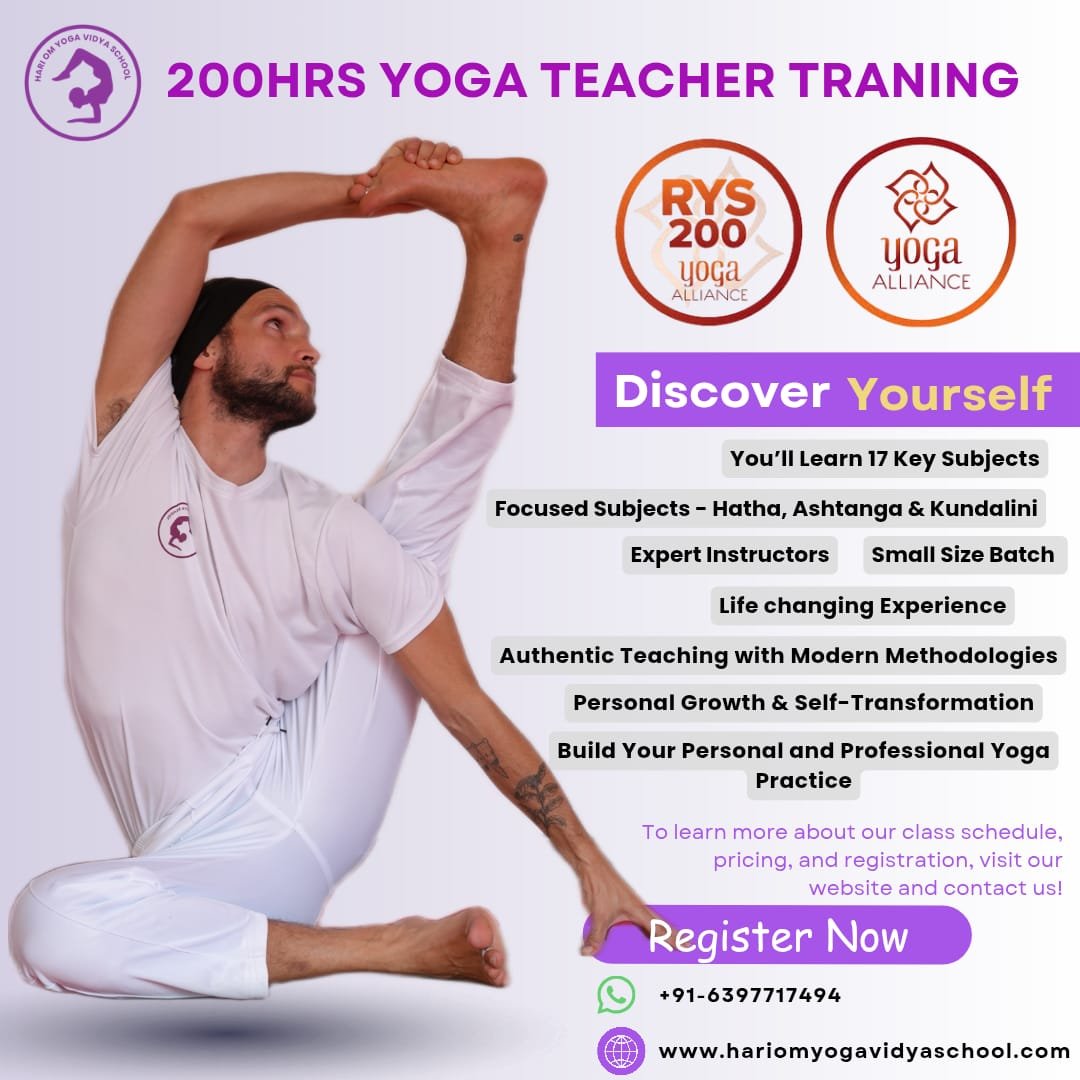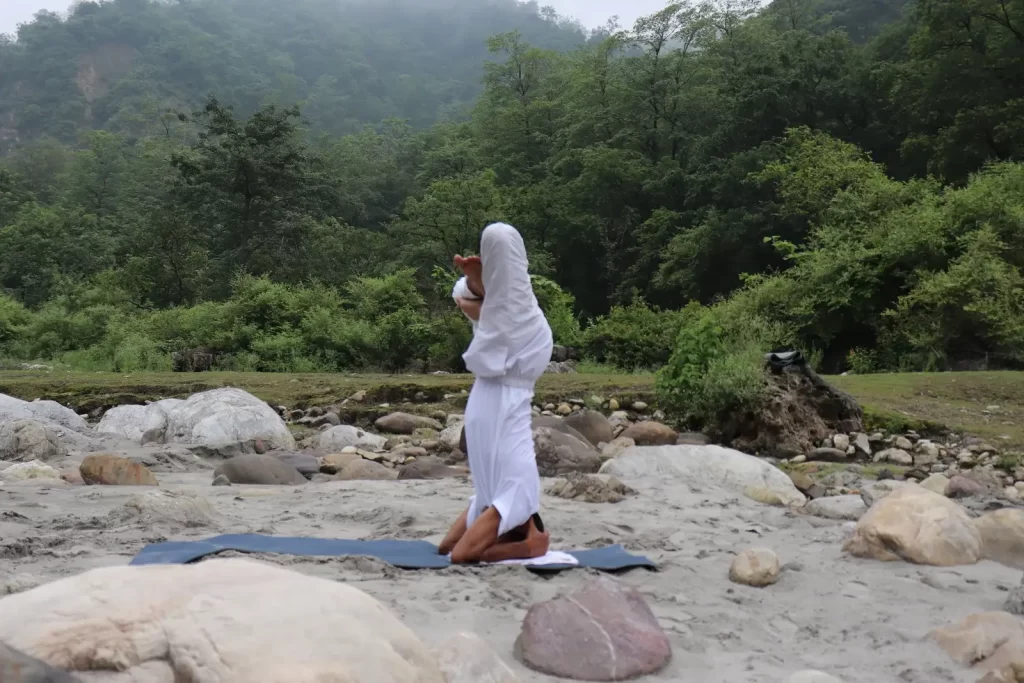Urdva Padmasana – Upward Lotus Pose
Urdva Padmasana is a very challenging pose, which is also considered an extension of the Sarvangasana. It is one of the asanas or poses in the first series of Ashtanga Yoga. You have to master the Padmasana, before you can attempt the Urdva Padmasana. Moreover, you also need to master Sarvangasana, before you can master this pose. There is another variation of this pose, which you can do in a headstand.
The name of this asana or pose has been derived from Sanskrit. You can break it up as follows:
- Urdhva means ‘upward’
- Padma means ‘lotus’
- Asana means ‘posture’
You need to have a strong foundation and sense of balance, if you want to perform this asana. Moreover, bandhas are also important. You need to have a lot of strength in your lower body and also the shoulders and neck, to be able to perform this asana or pose. For the unversed, it is a hip opening yoga pose.
Read More: Why Is Kundalini Yoga Dangerous? The Truth About Its Risks and Rewards
How To Do Urdva Padmasana?

- You have to start in the shoulder standing pose, or Sarvangasana. Your hands should be supporting your back, in this case.
- Cross your legs into the lotus pose, by sticking the right foot into the left thigh and vice versa.
- Exhale and lower the legs in that position, and make them perpendicular to the ground.
- By balancing the entire body on your shoulders, you have to release the hands from the back, and keep them straight, resting against the knees.
- Breathe normally, while holding this pose or asana.
- Again, when you are ready to return to the original pose, you must remove your hands, and support your back with the hands again. Lift the legs straight out of the cross-legged position and resume the shoulder stand position.
- Repeat with the other leg.
Modifications and Variations Of Urdva Padmasana
- You should use a folded blanket, under the neck and head, to ease the pressure. It is something that will help the beginners to get the hang of it.
- You can try to do the asana, with the help of a wall.
This asana may be easy for one student, and difficult for another one. So, you can do the variations. One variation, which everyone can do is the one in which, you hold the torso, with the hands. The body is at a 45-degree angle at first. You raise the legs in that degree. And then cross your legs.
You should practice Sarvangasana, Padma asana and Halasana, and then attempt this pose.
You should breathe normally. Inhale when you lift the leg. Stay there for 5-6 breaths in the final upside-down cross-legged pose. Your gaze should be towards the top, or Urdhva Drishti.
Safety Precautions of Urdva Padmasana Decoded
Since, this is an advanced level pose, you have to exercise a lot of caution, while doing this pose. Here are a few cues which will help you to do the asana, without any hindrance.
- You should not turn the neck, when you are in the final pose. Otherwise, you will end up hurting yourself.
- You must have mastered the Padmasana and Sarvangasana, before you attempt this pose.
- When in the final stage of this pose, you must rest your hands on your knees.
- The shoulders should rest on the floor, when you are doing this asana.
- You should always attempt this asana in front of a trained person.
- Unless and until, you are comfortable with bandhas, you must not do the pose.
Who Should Avoid Urdva Padmasana?
If you have a fairly healthy body constitution and have completed the beginner’s level, you can do this course. On the contrary, certain individuals cannot do this asana or pose. Some of the conditions, in which you cannot do the asana or pose are:
- If you have a very hyperactive thyroid, and also suffer from high blood pressure, then you should not do this asana.
- Anyone who is suffering from injuries of the shoulders, head, neck, back or ankle, must avoid the pose.
- You should avoid the pose, if you are pregnant.
- If you suffer from glaucoma, or ear infections, you must not do the pose.
Benefits Of Urdva Padmasana
- You will get relief from Asthma, Bronchitis, Breathlessness and palpitation if you practice this pose on a regular basis.
- Regular practice of this pose can also help to eradicate common cold and nasal issues.
- This pose is known to activate the Thyroid and Parathyroid glands.
- You will also be able to get rid of all your menstrual troubles.
- The practice of this asana also purifies the nala and urethra channels.
- The front part of the spine also becomes firm.
Deepen Your Yoga Practice with Hari Om Yoga Vidya School
Located in the heart of Rishikesh, Hari Om Yoga Vidya School is a place where ancient yogic wisdom meets modern teaching techniques. As a top yoga school in Rishikesh, we are committed to providing authentic, immersive yoga education in a peaceful, spiritual setting. Recognized as one of the best yoga schools in Rishikesh, we offer structured training programs designed to help you evolve in your practice, whether you are a beginner or an experienced yogi.
If you’re searching for a yoga school in Rishikesh that focuses on holistic learning, experienced teachers, and a supportive community, look no further!
Read More: Everything You Need to Know About Kundalini Yoga Teacher Training
Explore Our Yoga Teacher Training & Retreats
At Hari Om Yoga Vidya School, we offer a range of courses tailored for different levels of practitioners:
✅ 100-Hour Yoga Teacher Training in Rishikesh – A foundational course for those looking to begin their yoga journey.
✅ 200-Hour Yoga Teacher Training in Rishikesh – An internationally recognized certification for aspiring yoga teachers.
✅ 300-Hour Yoga Teacher Training in Rishikesh – Advanced training to deepen your practice and refine your teaching skills.
✅ 7-Day Yoga Retreat in Rishikesh – A rejuvenating escape into yoga, meditation, and self-discovery.
✅ 10-Day Yoga Retreats in Rishikesh – A transformative experience that blends yoga, relaxation, and Himalayan serenity.
Join us for a life-changing experience and become part of our global yoga family! 🌿✨




